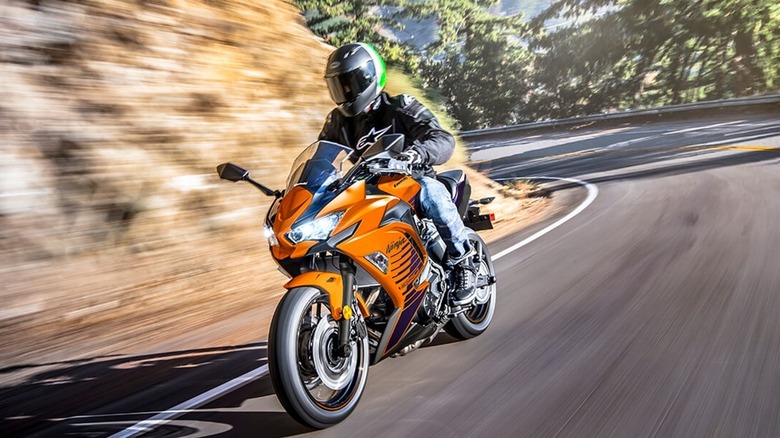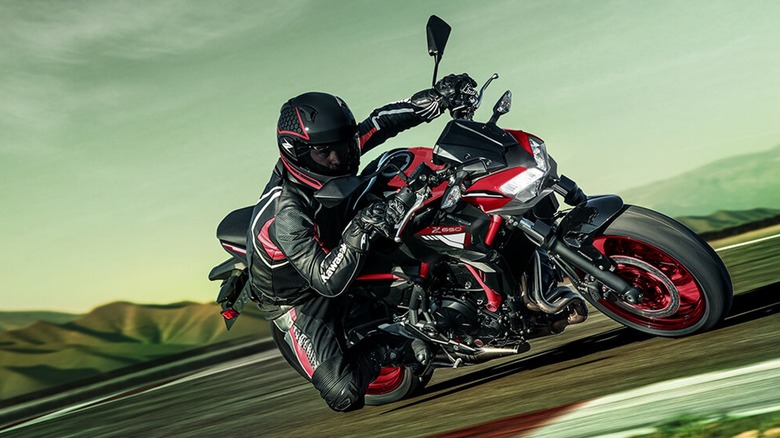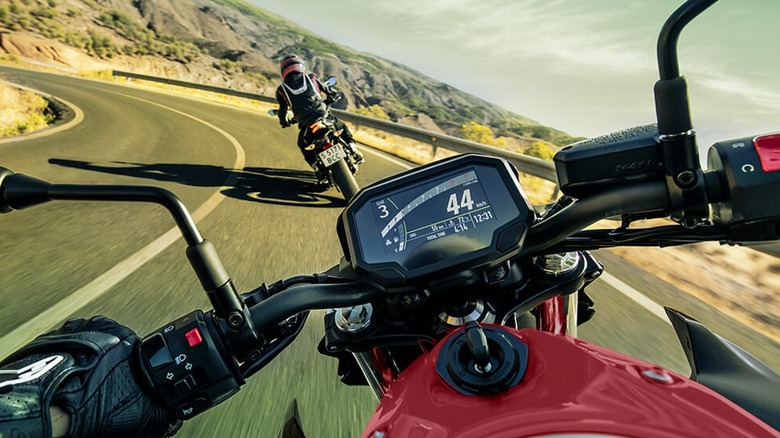Kawasaki Z650 Vs. Ninja 650: What's The Difference Between These Sportbikes?
When comparing the Kawasaki Z650 to the Ninja 650, you'll notice the differences in naked bike vs sport bike styling, with the Z650 representing the naked style and the Ninja 650 sport bike, one of Kawasaki's most eye-catching motorcycles. If you're inside a Kawasaki dealership, you will probably notice the difference in price next.
While Kawasaki 650s aren't the cheapest new motorcycles you can get, their prices are more reasonable than you might suspect. A 2024 Kawasaki Z650 has an MSRP of $8,149 or $8,649 if you opt for the version with ABS. The 2024 Kawasaki Ninja 650 costs a little more with MSRPs listed at $8,299 without ABS and $8,899 with ABS. Kawasaki hasn't released pricing for the 2025 Z650 yet, but the 2025 Kawasaki Ninja 650 prices carried over from 2024.
In addition to the obvious differences in exterior style, the two Kawasaki 650s offer different color scheme options. The 2024 Z650 comes in two color combinations, Metallic Matte Dark Gray with Flat Spark Black or Candy Persimmon Red with Ebony. The 2025 Ninja 650 ABS comes in color combinations including a three-color scheme featuring Candy Steel Furnace Orange with Metallic Spark Black and Metallic Royal Purple, the two-color Metallic Matte Old School Green with Metallic Spark Black, and the KRT Edition with Lime Green, Ebony, and Pearl Blizzard White. Non-ABS 2025 Ninja 650s come in Metallic Spark Black with Metallic Flat Spark Black.
Are Kawasaki Z650 and Ninja 650 motorcycles mechanically the same?
Kawasaki specs published online indicate both bikes share identical 649cc engines. Similarities include the inline two-cylinder layout with dual overhead camshafts (DOHC), four-stroke engine operation, and liquid cooling. Engines use a 83.0mm diameter cylinder bore and a 60.0mm crankshaft stroke.
Both motorcycle model engines have compression ratios listed at 10.8:1, digital fuel injection (DFI) with 36mm throttle bodies, and TCBI (transistor controlled breaker-less ignition) electronic ignition. Power output is rated at 48.5 lb-ft of torque regardless of model.
Ninja 650 and Z650 models have telescopic fork front suspensions with 4.9 inches of travel, horizontal back-link rear suspension with 5.1 inches of travel, and roll on the same size tires. Braking is provided by dual 300mm petal-style discs and two-piston calipers up front with a single 220mm petal-type disc at the rear.
The most significant difference between the two is height. Both models have the same 31.1-inch seat height and 5.1 inches of ground clearance, but the Ninja 650 comes with a taller windscreen driving its overall height to 45.1 inches compared to the Z650's 41.9-inch height.
What tech features do the Z650 and Ninja 650 share?
Both the Ninja 650 and Z650 offer some modern tech features, like rider aids and digital instrument display screens displaying common information like speed, rpm, and an ECO indicator. They also have an Assist and Slipper Clutch, Kawasaki Traction Control (KTRC), and available ABS.
The Assist function of the Assist & Slipper Clutch helps reduce spring load feel at the clutch lever for easier clutch operation. The Slipper function helps prevent rear-wheel lockup caused by excessive engine braking during quick downshifts.
KTRC helps limit rear-wheel spin during cornering and acceleration "by maximizing forward drive." The system calculates lean angles in relation to the driving surface, rather than a level plane, to account for corner camber and slope to allow acceptable amounts of slippage.
The Kawasaki Z650 provides a smartphone connectivity option via "Rideology the App." The app connection not only allows phone notifications to display on the Z650's display screen, it allows riders to change the display's settings for units, date, and time, etc. and view various vehicle information details.


